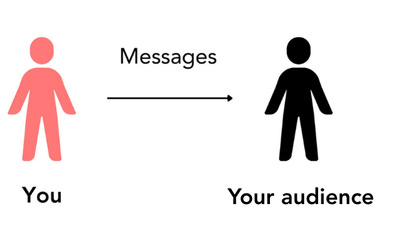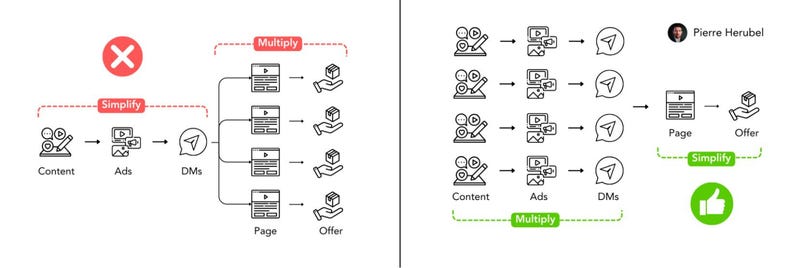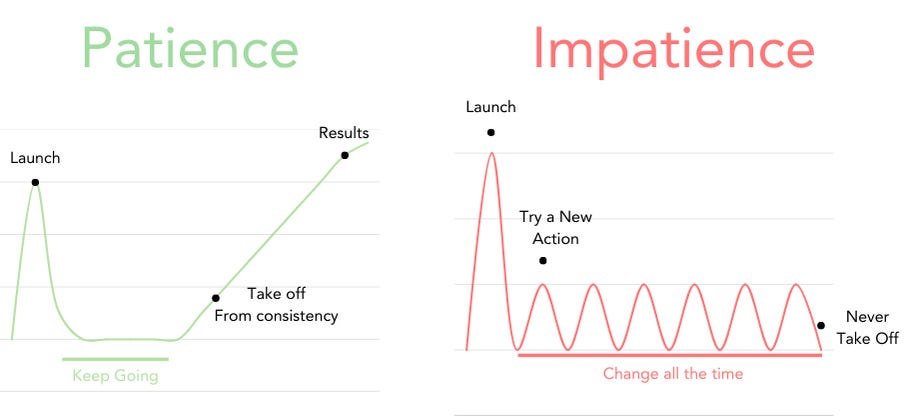My 7-step plan for building my second 7-figure business
Steal this marketing plan for your own business
Hello, welcome to this edition! 👋
Today, I'm pulling back the curtain on the exact plan I’m using to build my second 7-figure business.
While every marketer loves to chase the latest marketing hack, I’ve found it’s the fundamentals that consistently deliver results.
Today, I’m sharing my entire playbook with you so you can steal it and implement it for your own business.
So here’s what you’ll learn in this edition:
My complete 7-step marketing plan that you can model
Why most businesses fail to reach 7-figures (despite having good ideas)
How to be in the top 1% of businesses
But before we dive in…
Imagine if ONE idea could power your content for the entire week?
Very soon, I’ll be releasing my unique repurposing system that turns ONE insight into 20+ posts … across text, image, AND video … using tools you already know, and AI prompts that support your creation.
The Repurposing Factory helps you drive:
📈 More views
🤝 More inbound leads
💰 And more B2B revenue
…while saving HOURS on content creation each week.
For a short launch window, it’ll be available at half-price. But you can get an EXTRA 10% off if you join the waitlist, today!
Click here now to join the waitlist for Repurposing Factory.
My 7-step marketing plan to hit $1M in revenue
I bootstrapped my B2B agency to 7-figures in just 14 months using this exact framework.
Now, I’m doing it again, and I know this action plan is more than enough to reach $1M in revenue.
Let's break it down step by step:
Step 1: Set up your marketing strategy foundations
The worst thing a business can do is run marketing tactics without first having a strategic foundation.
The foundations aren’t sexy, but they’re what separates the winners from the losers in business.
To nail your foundations, you must:
Choose your target audience: Who exactly are you helping? Be specific. Industry, business type, psychographics, niche.
Research their pain points: What problems keep them up at night? What are they frustrated by?
Craft your value proposition: What outcome do you help them achieve? How is it better or faster?
Decide on your positioning: What makes you different? Why should someone choose you over others?
Write your brand narrative: What’s your story? How does it build trust and align with their values?
I like to spend as much time as I can refining my strategy foundations before I execute even a single tactic.
Trust me, this clarity can often save you months of wasted effort later.
Step 2: Create an offer that solves a painful problem
You should think of your offer as the bridge between their current limitation and their dream outcome.
And if your B2B offer isn’t solving a PURE problem then no amount of marketing can help it.
A PURE problem is one that is:
Painful: It genuinely hurts their business
Urgent: They need it fixed now
Recognized: They know they have this problem
Expensive: The cost of not fixing it is high
These are the problems people are willing to pay real money to solve.
For example, instead of your offer being:
❌ AI-powered marketing optimization.
It could be:
✅ Identify and fix why your best-performing blog posts aren't converting using AI-based funnel drop-off analysis.
This is a PURE problem because it’s:
Painful = If you’re driving traffic but not converting it into pipeline, you’re missing out on revenue.
Urgent = The longer this gap exists, the more money you're spending on content without return.
Recognized = B2B businesses (should) track conversion rates, so they’ll know if their content isn’t leading to results.
Expensive = The cost of inaction outweighs the cost of paying someone to fix the issue.
Step 3: Write your messages to convince your audience
Once you have a solid offer, you need persuasive messaging.
If you can’t articulate your offer clearly and with conviction, your prospects will just scroll past.
In your messaging you need to speak to:
Their pain (“You’re losing revenue due to X”)
Their aspirations (“Imagine if you could Y without doing Z”)
Your unique approach (“We use a proven 3-step system”)
Your proof (“Used by teams at HubSpot, Stripe, and Notion”)
I’ve found that your best messaging often comes from actual customer conversations.
Customer interviews are such a hack for discovering the real reasons your customers are buying, which you can then integrate into your messaging.
Once you have your messaging strategy locked in, everything else becomes easier: your LinkedIn posts, outbound emails, and even your landing pages.
Step 4: Distribute content to help your audience
This is your inbound engine.
By consistently creating and publishing helpful content, you:
Build authority in your space
Create awareness among passive buyers (a.k.a. the 95% of your market not ready to buy yet)
Generate inbound demand
Create opportunities you can "harvest" later
Organic content helps you attract, educate, and qualify buyers for free.
Steps 1-3 set the stage, but step 4 is where you start seeing real results. Let me explain why:
Step 4 will stimulate inbound demand.
When you consistently share valuable insights, a percentage of your audience will reach out to you first.
These are high-quality leads because they've ‘self-qualified’ by consuming your content.
And it will create opportunities to 'harvest'.
When it’s not generating inbound leads, your content is warming up your entire audience for the next three steps, which are:
Step 5: Build your email list to educate and sell
Your email list is your most valuable marketing asset.
It gives you direct access to your audience without relying on algorithms or platforms.
Email is perfect for creating and sending longer, trust-building content that educates readers and converts them into buyers.
In my emails, I always focus on:
Providing exclusive value they can’t get anywhere else
Nurturing my relationship with my readers over time
Converting subscribers into buyers with educational content and persuasive CTA’s
The best email lists aren’t the biggest ones either. A small but engaged list can go a very long way.
Click here now to join the waitlist for Repurposing Factory.
Step 6: Send warm outbound emails and DMs
Outbound works best when your brand and content do the heavy lifting.
After your content engine is set up, people start to become more aware of you.
You become ‘top-of-mind’ for them in regards to their problems.
This means when you’re reaching out to them, they already somewhat know, like, and trust you.
My approach for warm outreach is to:
Identify people who engage with my content
Research their specific situation
Send personalized outreach referencing relevant content
Focus on starting a conversation, not making a sale
Warm outbound helps target the people who are too busy, lazy or afraid to reach out to you first.
Step 7: Capture demand with retargeting paid ads
This is the final cherry on top of your marketing system.
Once people know you through your content, retargeting them with ads is far more effective than cold advertising.
You can simply:
Retarget website visitors and content consumers
Show ads that expand on topics they've already shown interest in
Include clear calls to action to subscribe to your email list or learn more
Keep the ad spend focused and measurable
Retargeting ads typically convert at a much higher rate than cold traffic, making them more cost-effective.
This is how you turn content + email + outbound into sales.
This plan is all you need to hit $1M
I've seen this framework work repeatedly, both in my own businesses and with my clients. Yet most businesses won't use it because:
They seek complexity, not efficiency.
Unfortunately, too many business owners believe that success requires complex funnels and systems. In reality, simple execution of the basic fundamentals will always outperform complexity.
They are solving a 'not-so-painful' problem.
If your solution doesn’t address a genuine pain point, no amount of marketing will create sustainable demand.
They quit too fast (no consistency or discipline).
Results from content and relationship-building take time. Far too many quit right before the compound effect kicks in.
They have shiny object syndrome (can't focus).
Jumping from strategy to strategy guarantees you’ll never gain the needed momentum to succeed. The strategy that works is the strategy you work on.
If you can spot a market problem, follow a good playbook, and have discipline; you will drastically increase your chance of success.
You and your business will ascend into the top 1%.
Want to learn how I create over 40+ pieces of content a week?
I’m soon launching my new course, Repurposing Factory.
Inside, I teach you the exact system I use for repurposing content, including my 1-15 rule which turns one insight into:
5 written posts
5 short-form videos
1 carrousel
1 infographic
1 newsletter
1 blog post
1 long-form video
Imagine how much more streamlined your content creation efforts would be with a system like this in place?
Join the waitlist here today to get an EXTRA 10% off the launch price when it goes live.
Alright that’s the end of this newsletter. I hope it helped you! Thanks for reading :)






































So much valuable! Merci Pierre 🙌